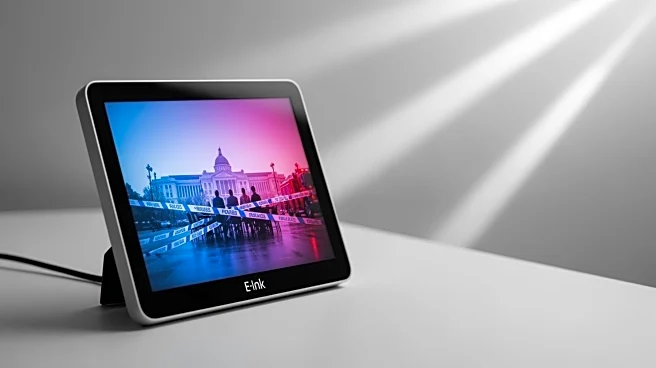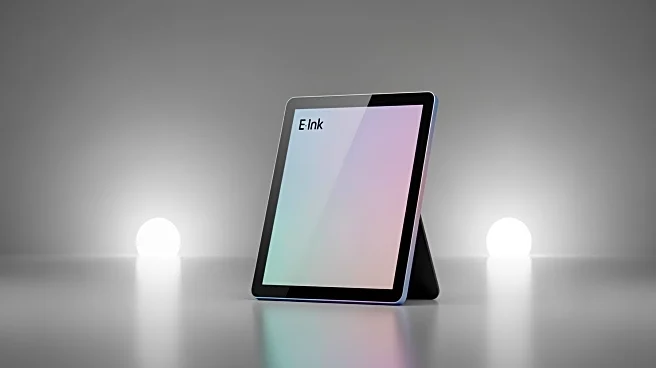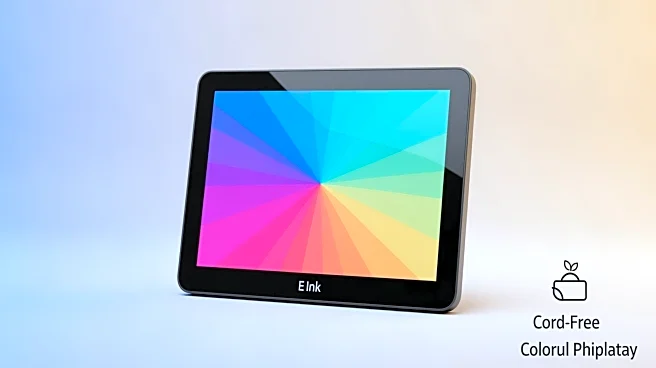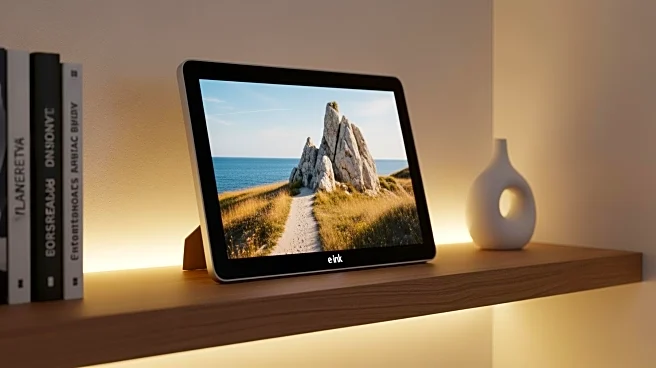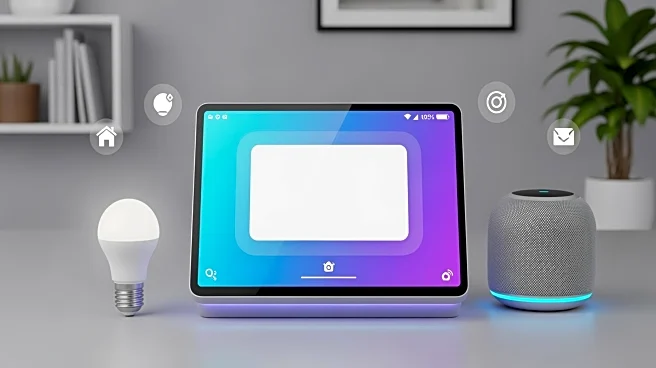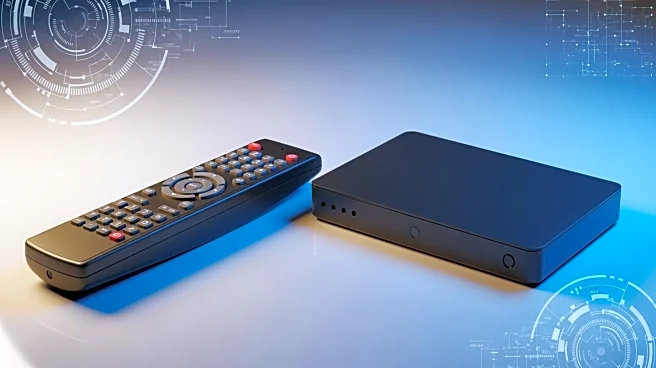What's Happening?
Aura has launched its first digital photo frame featuring a color E Ink display, designed to operate cord-free for extended periods. The Aura Ink frame uses a 13.3-inch E Ink Spectra 6 panel, allowing
it to display photos without the need for constant power supply, unlike traditional LCD frames. This innovation aims to provide a solution for users who prefer minimal cords and a more traditional photo display experience. The frame is priced at $499, which is significantly higher than other models in Aura's lineup. The technology behind the frame allows it to display photos using six colors, mimicking the appearance of printed images. The frame includes features such as a motion sensor to conserve power and a subtle front light to enhance image visibility.
Why It's Important?
The introduction of Aura's color E Ink frame represents a significant advancement in digital photo display technology, offering a new option for consumers who value aesthetics and minimalism in their home decor. This development could influence the digital photo frame market by setting a precedent for cord-free operation and long battery life. The high price point may limit initial adoption, but it highlights the potential for future innovations in the sector. As consumers increasingly seek tech solutions that integrate seamlessly into their living spaces, Aura's product could drive demand for similar advancements in other home electronics.
What's Next?
Aura's new frame may prompt competitors to explore similar technologies, potentially leading to more affordable options in the future. The company might also refine its E Ink technology to improve color accuracy and reduce costs, making it more accessible to a broader audience. As the market for digital photo frames evolves, consumers can expect further innovations that balance functionality with aesthetic appeal.
Beyond the Headlines
The launch of Aura's E Ink frame raises questions about the future of digital displays and their environmental impact. E Ink technology is known for its energy efficiency, which could contribute to more sustainable consumer electronics. Additionally, the shift towards cord-free devices reflects a broader trend in tech design prioritizing user convenience and reducing clutter.
